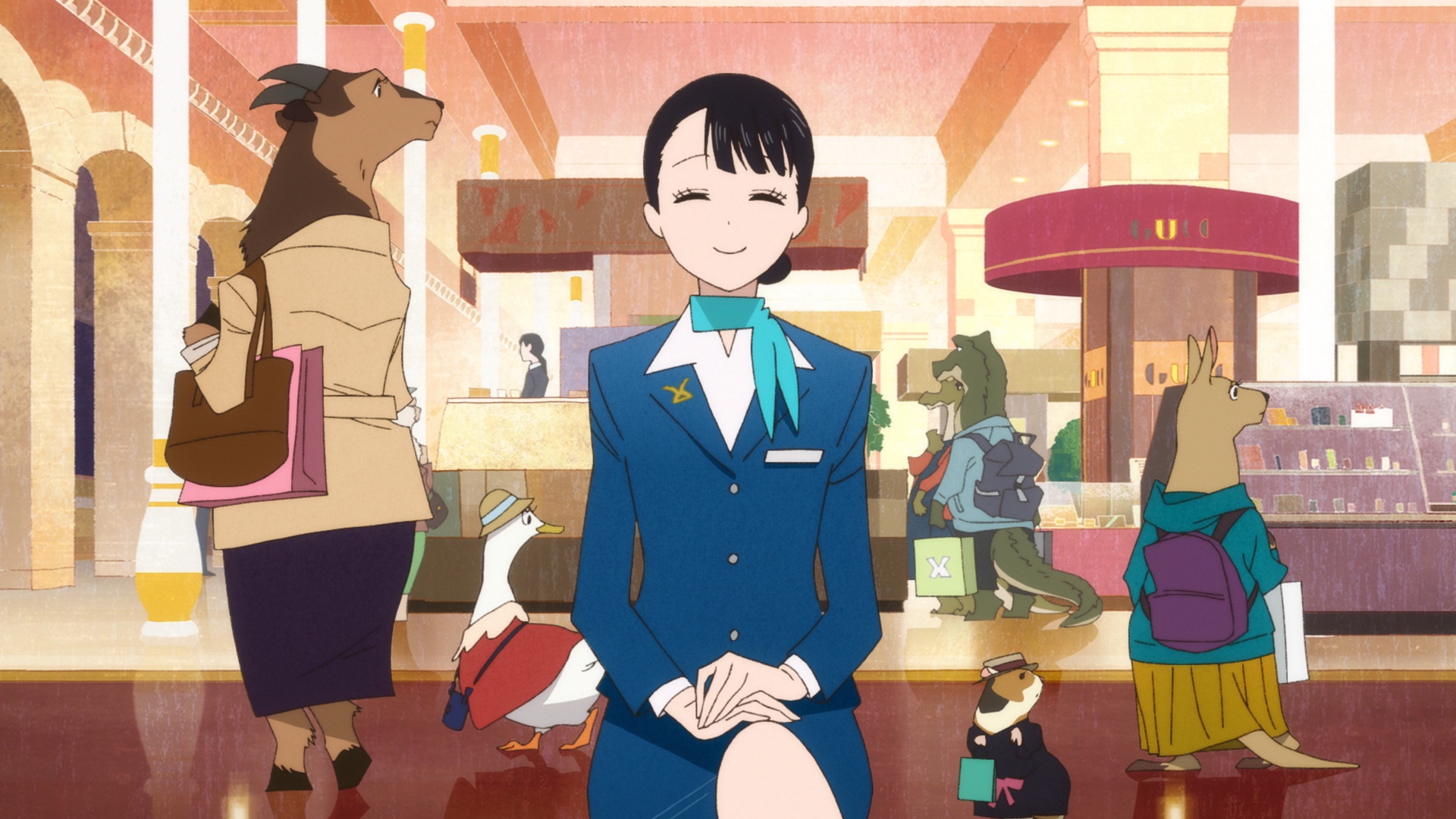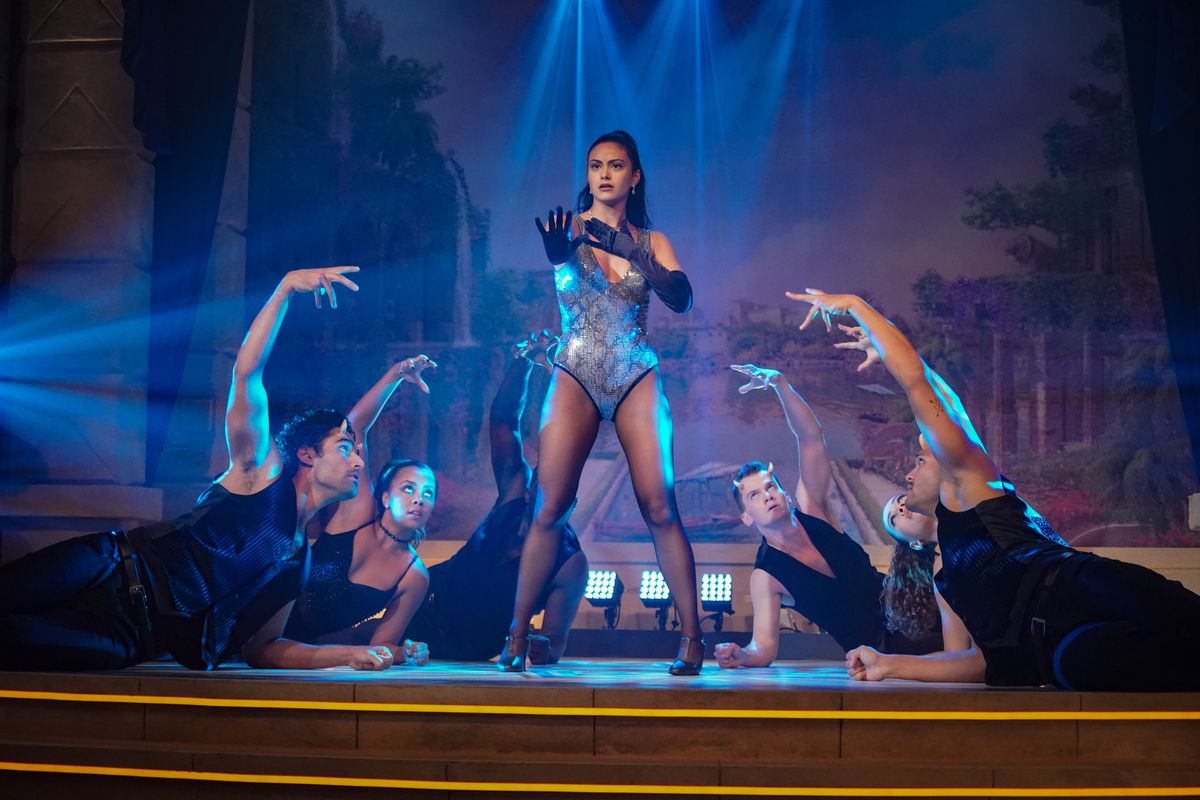Every so often, a show comes along that makes you remember exactly why you love stories. Not just television series or animation, but the bigger, grander concept of storytelling in general, and how someone’s personal experience can inspire something greater and universal, without ever losing that individual spark.
Blue Eye Samurai comes from husband-and-wife team Michael Green (Blade Runner 2049) and Amber Noizumi. It was inspired by a very personal moment in Noizumi’s life: After the birth of the couple’s child, she looked at her child’s blue eyes and wondered why she was so thrilled to see white features in her daughter. Interrogating that thread, Noizumi came up with the story of Blue Eye Samurai, Netflix’s newest animated show.
Every part of Blue Eye Samurai clearly comes from a personal place for Green and Noizumi — and that passion speaks to just how brilliantly evocative and exciting it is. The show is much longer than typical animated television, but the sweeping scope of the story deserves that much attention. It’s not a show that takes time to gel. From the beginning, it hooked me in, and there wasn’t a second where I felt my attention waning throughout the eight episodes. Blue Eye Samurai reminded me that the best stories feel like they speak directly to you, even if they’re about places you’ve never been and experiences you’ve never had.
[Ed. note: This review contains spoilers for Blue Eye Samurai.]
:no_upscale()/cdn.vox-cdn.com/uploads/chorus_asset/file/25038695/BLUE_EYE_SAMURAI_u_S1_E2_00_42_01_22.jpg)
Blue Eye Samurai starts off in familiar territory: a revenge-driven samurai, a lone warrior who doesn’t have time for friends or any meaningful relationships. But from the get-go, there are enough small twists to differentiate it. The warrior at the center is a mixed-race woman named Mizu (Maya Erskine), who hides both her biracial identity and her gender in order to make her way in the world. And the men she seeks to kill are the four white men who were in Japan at the time of her birth — one of her four possible fathers.
Along the way, Mizu crosses paths with Ringo (Masi Oka), an eternally optimistic noodle maker determined to achieve greatness despite his disability; Taigen (Darren Barnet), a self-made samurai searching to regain his honor, who also shares a past with Mizu; and Akemi (Brenda Song), the highborn daughter of a lord who seeks forge her own path in a world where women don’t have much of a path at all. The show is still centrally Mizu’s, but the three other main characters all prove to be fantastic foils to bolster her arc. Even when they’re not on screen together, the series ably weaves their stories together. Their individual arcs all evolve alongside one another, each reflecting the others and pushing the greater story forward. In their own ways they all speak to the greater themes of the show, an overarching story about Japan’s isolationism and the Western influence. But tying it to these specific characters makes the bigger stakes more personal. Through them, and their journeys, we better understand the world while also understanding where each character is coming from. It’s a beautiful synergy, and a constantly tricky balance that Green and Noizumi brilliantly pull off.
:no_upscale()/cdn.vox-cdn.com/uploads/chorus_asset/file/25053080/BLUE_EYE_SAMURAI_u_S1_E5_00_41_30_08.jpg)
:no_upscale()/cdn.vox-cdn.com/uploads/chorus_asset/file/25053101/BLUE_EYE_SAMURAI_u_S1_E2_00_06_22_03_R.jpg)
This is all further elevated by the show’s animation. A historical drama is not necessarily the genre one thinks of when imagining a story made stronger by animation, but Blue Eye Samurai is as spectacular as it is because of the medium. It allows for dynamic visuals, and for the storytelling to be pushed to higher levels. One particular evocative episode uses traditional Japanese bunraku puppets to tell a story that juxtaposes both the action within the current day and a flashback. The hybrid 2D-3D animation, with a distinct, soft painterly quality to the visuals, is a style rarely seen in mainstream animation, let alone in adult animated television. It feels like Arcane in the way it elevates the visual expectations of television animation. The result is breathtaking, from the distinct character designs to the gorgeous backgrounds and setting.
The art especially shines in the show’s fight sequences. I am not someone who usually looks forward to long fight sequences, but I could not look away from Blue Eye Samurai, even during those lengthy battles (and sometimes, especially during those). The fight choreography is vibrant and fresh. Part of it is the animation, certainly, and the way that each battle is new and exciting. But it all comes back to Mizu, and what a strong, compelling character she is — and how she would not exist without the world around her being what it is. Her fighting style is a hodgepodge of different techniques that she picked up from her unorthodox childhood, blending various schools of training together. She knows the in and outs of each one, and how fundamentally there is no actual superior combat method.
Every part of Blue Eye Samurai synchronizes together in perfect harmony. I was initially drawn to the show because the main character, like myself, is mixed race. But I began to love Mizu for just how unlike me she is, shaped so totally by her world and her own story. She and the rest of the characters are very human and real, but carve their own paths. It makes the show both familiar and unique; though I’ll never live in Edo-era Japan or challenge someone to a duel for my honor, through the writing and the acting, I understand the greater stakes of the world the same way Noizumi spun her personal experience into something much bigger. It uses animation and action to help push that story along to something broader and more fantastical, but never loses sight of the main character’s central conflict amid the spectacle and expanding cast. It’s the best show I’ve watched in years.
Blue Eye Samurai is out on Netflix now.








